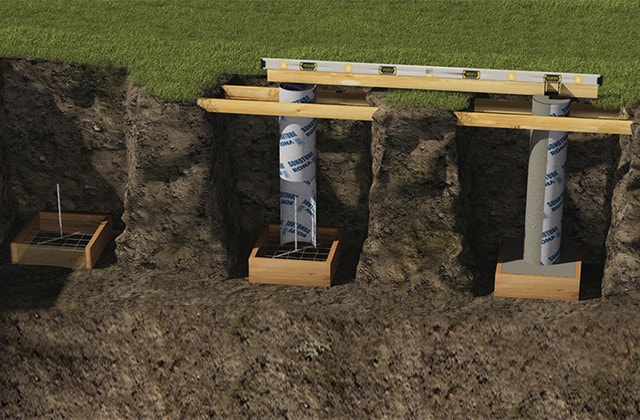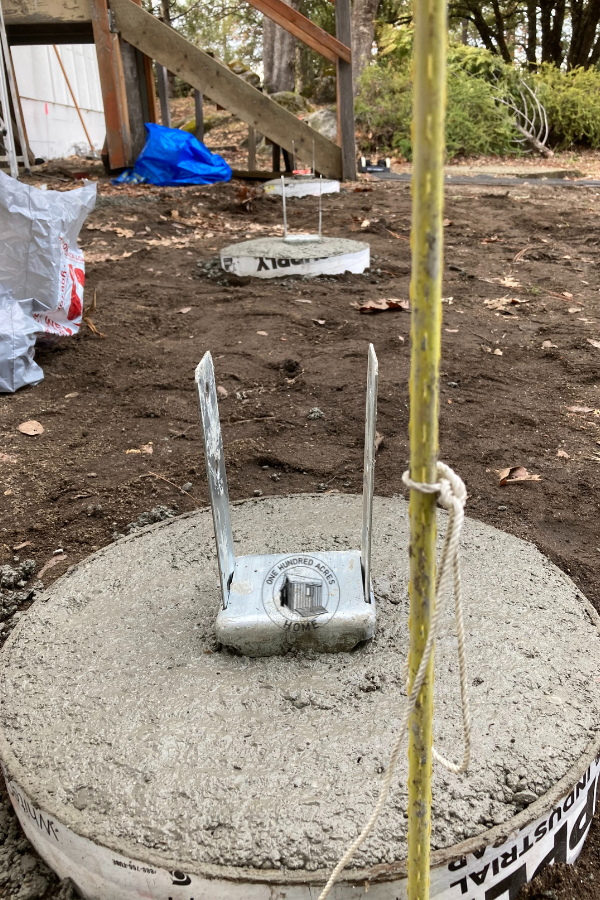Step-by-Step Deck Quality: Making Certain Security with Effectively Mounted Deck Footings
Make Certain Stability and Long Life With Correctly Mounted Deck Footings
Deck footings may not be the most attractive facet of deck building and construction, but they play an important duty in making certain security and durability. In this discussion, we will explore the importance of correct deck grounds, aspects to think about during installation, different types of footings available, detailed setup overview, and upkeep ideas for making sure lasting footings.

Importance of Appropriate Deck Grounds
Why are appropriately installed deck footings vital for the security and longevity of your deck? The answer lies in the essential duty that deck grounds play in supporting the weight of the entire framework. Deck grounds are the structure on which the deck relaxes, moving the load from the deck to the ground. When footings are not appropriately set up, it can bring about a variety of issues that jeopardize the security and long life of the deck.
First of all, correctly set up deck footings distribute the weight of the deck uniformly, stopping any type of unequal settling or sinking. This is especially essential in areas with unstable soil, as it helps to mitigate the risk of the deck collapsing or shifting. In addition, well-installed grounds make sure that the deck stays level, preventing any architectural damages that can occur when a deck becomes irregular.
Second of all, correctly installed grounds supply a strong anchor for the deck, stopping extreme movement and guide. This assists to maintain the architectural honesty of the deck, minimizing the risk of injuries or crashes. It likewise lessens the deterioration on the deck, allowing it to hold up against the aspects and regular usage for a longer amount of time.
Variables to Think About for Deck Footing Setup
When setting up deck grounds, there are a number of essential elements to think about for proper installation. Various dirt kinds have different load-bearing capacities, so it is essential to carry out a dirt test to make certain the footings can sustain the weight of the deck and its occupants. By taking right into account these elements, you can make certain the appropriate installment of deck footings and delight in a steady and long-lasting deck.
Types of Deck Footings to Pick From
There are a number of various kinds of deck footings available for you to select from. Each kind has its own benefits and downsides, so it's necessary to consider your particular needs and the problems of your deck prior to choosing.
One usual type of deck footing is the concrete ground. This entails excavating holes in the ground and pouring concrete into them to create a strong structure. Concrete footings are resilient and offer outstanding stability, making them suitable for decks in locations with tough dirt problems or high wind tons.
Another option is the helical pier ground, which contains a steel shaft with helical plates that are screwed into the ground. These footings are fast to install and can be made use of in various soil kinds, including sandy or clay dirts. They are also flexible, enabling for very easy leveling of the deck.
Sonotube grounds are one more popular option. These footings are developed by putting a cardboard tube in an opening and loading it with concrete. Sonotube footings are reasonably simple to install and provide ample security for smaller decks or in locations with much less demanding dirt conditions.

When selecting the sort of deck ground, it's crucial to consider elements such as soil conditions, deck dimension and weight, regional structure codes, and individual choices. By choosing the proper ground kind, you can guarantee the stability and durability of your deck.
Step-by-Step Guide for Installing Deck Footings

Establish the place: Start by marking the precise placement of each footing utilizing risks and string (Deck Footings). Think about any kind of local structure codes or regulations concerning trouble distances
Dig the holes: Make use of a post hole digger or an auger to dig the holes for the grounds. Usually, a depth of at least 36 inches is suggested for security.
Degree the openings: Ensure that the bottoms of the openings are degree (Deck Footings). This can be attained by utilizing a level or a straight board across the Discover More Here top of the holes
Add crushed rock: Location a layer of crushed rock at the base of each opening to improve drain and stop the ground from penetrating the dirt over time.
Insert the footing forms: Insert the footing forms into the holes, ensuring they are centered and degree. Usage risks to protect them in position.
Mix and put concrete: Comply with the directions on useful site the concrete mix bag to prepare the concrete. Pour the concrete into the footing kinds, filling them totally.
Smooth the surface: Use a trowel to smooth the surface of the concrete and remove any air pockets. Allow the concrete to heal according to the manufacturer's instructions.
Upkeep Tips for Durable Deck Grounds
Correct upkeep is essential for making certain the durability and security of deck grounds. By on a regular basis examining and keeping your deck footings, you can protect against damage and possible safety threats.
Routine cleansing is also crucial for maintaining deck grounds. Greenery, dust, and debris can gather around the grounds, which can lead to moisture buildup and decay. Cleansing the footings on a regular basis, using a brush or a pressure washing machine, can assist prevent these problems and prolong the life-span of your deck.
In addition to cleaning, it is essential to maintain the location around the footings clear of any type of blockages. Stay clear of piling things versus the grounds or permitting plants to expand as well near to them. These blockages can catch dampness and cause the footings to weaken gradually.
Last but not least, normal resealing of the grounds is suggested to shield them from dampness and various other environmental factors. Applying a water resistant sealer can aid protect against water damages and expand the life-span of the grounds.
Verdict
Finally, appropriate setup site web of deck grounds is vital for ensuring security and long life of your deck. Variables such as dirt kind, tons capability, and regional building codes need to be considered when choosing the ideal kind of deck footings. Following a step-by-step overview for installment and routine maintenance will help to ensure the grounds stay long-lasting and durable.
In this discussion, we will discover the relevance of appropriate deck footings, factors to take into consideration throughout installation, various kinds of footings available, detailed setup guide, and maintenance tips for making certain resilient footings. Deck grounds are the foundation on which the deck rests, moving the load from the deck to the ground.One usual type of deck footing is the concrete ground. Insert the ground types: Put the ground develops right into the holes, guaranteeing they are focused and level.In final thought, proper installment of deck footings is crucial for making sure stability and durability of your deck.